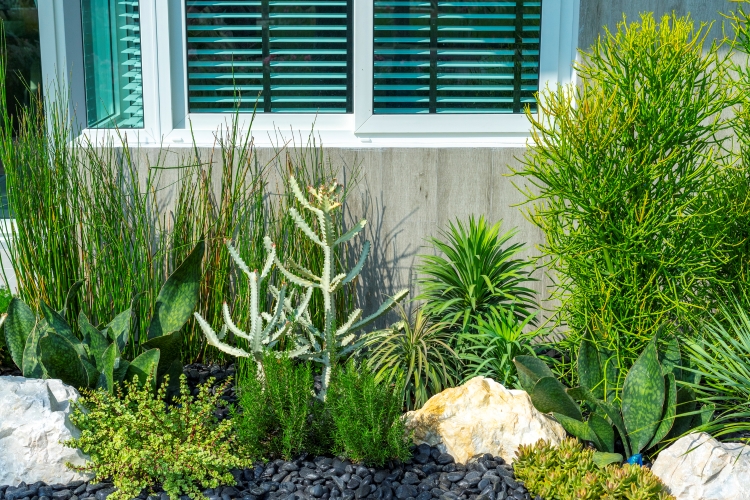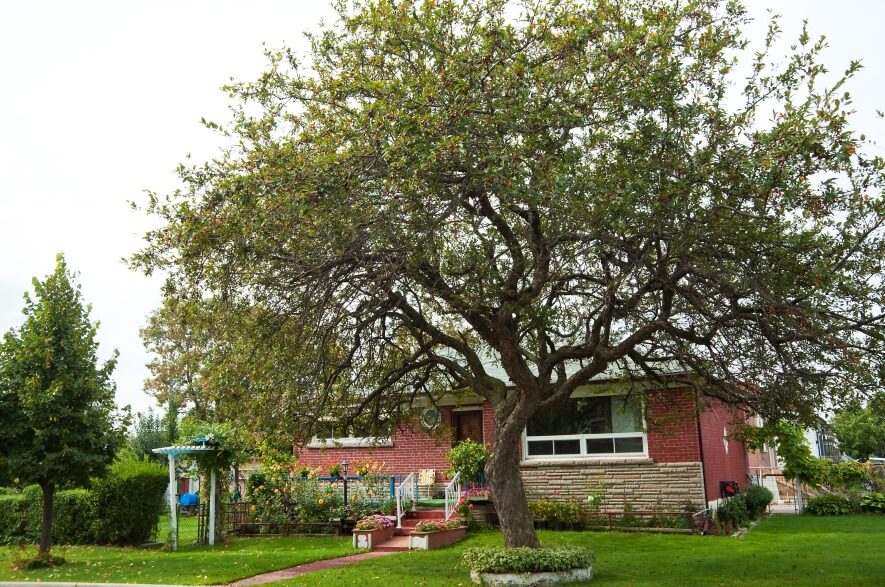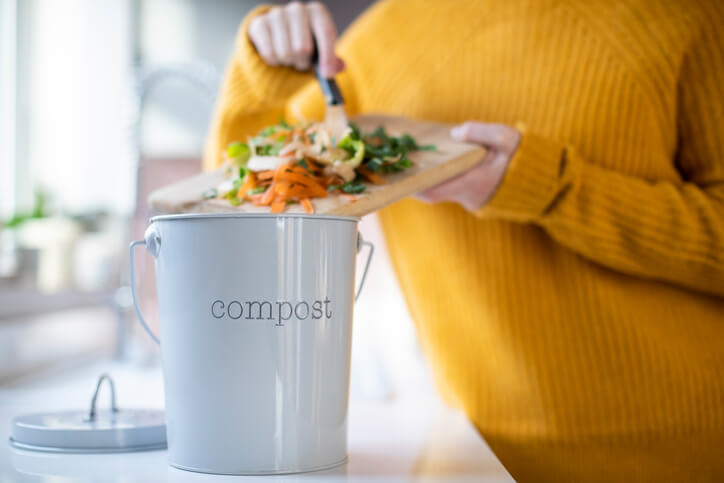Arid and semiarid climates like those found in much of the American West exhibit three main traits: low precipitation rates, high evaporation rates, and drastic temperature changes. Typically, arid climates receive fewer than 14 inches of rain per year, whereas semiarid climates receive fewer than 28 inches of rain, though far more commonly, their annual precipitation measures at fewer than 20 inches.
If you live in Arizona, Nevada, New Mexico, Utah, or Wyoming, among other states, you probably live in an arid or semiarid climate. The lack of moisture in these regions can make supporting plant life particularly difficult, and can turn your gardening and landscaping efforts into a struggle. Read on to find useful tips for a successful garden and lawn, even in the face of an arid or semiarid climate.
Ornamental Gardens
Xeriscaping is a landscaping plan used especially in arid and semiarid regions to promote water conservation. It includes, among other tactics, decreasing lawn space, using mulch, and choosing plants that thrive in your area, as well as grouping them appropriately.
Decrease Lawn Space
Suburban lawns require more than 20,000 gallons of water a year to stay green. Thus, one way to cut back on your outdoor water usage is to decrease the amount of grass in your yard. A deck, patio, or gravel bed can reduce turf space, as well as increase usable space by allowing you to create an area where you can cook, eat and entertain outdoors—which you will likely have more time to enjoy, considering that you’ll be saving time not mowing the lawn, fertilizing, or weed-whacking.
If you are reluctant to forgo grass, there are still ways you can reduce your outdoor water usage. One of the easiest ways is to raise the lawn-mower blades on your mower. Taller blades of grass provide shade for each other and help the soil retain water. You also want to make sure to aerate your soil to reduce runoff and help water reach plants’ roots.
You can also opt for grasses that thrive in dry environments, such as Bermuda grass, Zoysia grass, and Bahia grass.
Bermuda grass thrives in all-day sun and can tolerate heavy use, so if your yard receives a lot of sun and serves as a playground for children or pets, Bermuda grass might be a wise choice. That said, it may require mowing more than once a week.
If you live in a climate that is both dry and hot, Zoysia grass may be a good option; however, it does not tolerate much use, and is slow to recover from damage or stress.
Two of the greatest benefits of the third option, Bahia grass, are its ability to grow in poor soil conditions and its durability through heavy use.
Use Mulch
Although you will still need to water any bushes, shrubs, or flowers you plant, using mulch helps discourage the growth of weeds that would steal water from your plants. Even as little as two to four inches of mulch will minimize evaporation, retain moisture in the soil, and keep roots cool, so you probably won’t need to water plants in mulch beds as frequently as plants without mulch. And as a bonus, mulch helps to reduce lawn space.
Choose the Right Plants
Choosing plants that both conserve water and tolerate drought can also help you save water—while maintaining curb appeal. Water-conserving plants retain the moisture they absorb longer than other plants, and drought-tolerant plants can flourish for long periods of time without any water at all. Most succulents exhibit both traits, and can be an excellent choice for garden accents. Cacti are also a good option, especially if your climate is both dry and hot. Even in the heat of the summer, these hardy plants require water only once or twice a month.
Once you have decided which plants to include in your garden, you want to make sure you place them properly, grouping together plants that share the same moisture, soil, and sunlight needs. Place drought-tolerant plants separate from those that require more water. Plants that require more water will do well close to your house, where roof runoff will provide them with additional moisture when it rains. Plants that require less water will be able to survive farther away from your house.
In addition, space plants so that once mature, they will be close together. Doing so provides shade for the soil, which helps it retain moisture and keeps the roots cool.
Edible Gardens
One of the best ways to enjoy fresh, organic produce is to grow it right in your own backyard, but if you live in an arid or semiarid climate, making sure your fruits and vegetables stay hydrated can be challenging, especially if you want to conserve water. A few tactics to conserve water in your edible garden are to select plants with low water needs, plan with grouping and design in mind, add compost to your soil, and time your irrigation wisely.
Select the Right Plants
In a dry climate, you might want to avoid plants with high water requirements— such as broccoli, cabbage or cauliflower—or plant fewer of them. Plants like tomatoes, squash, and melon typically do well in dry climates. As a rule of thumb, plants with deeper root systems are better suited to drier climates than plants with shallower root systems. Knowing plants’ root depths can help you determine which ones might be best suited for your area.
Plan Efficient Grouping and Design
When you plan your fruit or vegetable garden, pay close attention to the spacing recommendations for each plant. Plants require room for their roots to spread, so place them no closer together than their instructions suggest. But don’t place them too far apart, or they won’t be able to provide shade for each other or for the soil and you’ll need to water a larger area.
Although many of us are accustomed to the sight of the row upon row of corn, potatoes, or soy beans in farmers’ fields, in your own backyard garden, planting in blocks, not rows, can help you conserve water and time, as watering a block no more than three feet wide is more efficient than spreading water over a long row. In addition, blocks provide more shade and allow for less evaporation.
Incorporate Compost
A five-percent increase in organic matter in your garden’s soil can improve its ability to retain water fourfold. Because compost helps your soil remain moist longer, you can water your plants less frequently. You can sprinkle a thin layer of compost over your garden soil, a process known as top-dressing or side-dressing, which will reduce evaporation and seal in moisture.
Read more – How to Start Composting at Home
Know When to Water
Part of saving water and maximizing the efficiency of its use involves knowing the best times to water, both in terms of the time of day and your plants’ growth cycles. Avoid watering your garden between 6 a.m. and 8 p.m., as watering in the heat of the day can result in more water usage due to evaporation and wind.
Also avoid watering your plants at the same rate, without regard for where they are in their life cycle. Instead, consider the development and circumstance of each plant to help save water. Plants need the most water before they reach maturity, directly after a transplant, and when producing fruit.
Living in an arid or semiarid climate doesn’t mean that you can’t have a lavish garden or lush lawn. Nor does it mean that you have to spend a chunk of your income on your water bill. With thoughtful planning, you can have a beautiful outdoor space to enjoy, even in the heat.
READ NEXT: Gardening for Beginners: How and Why You Should Try It






